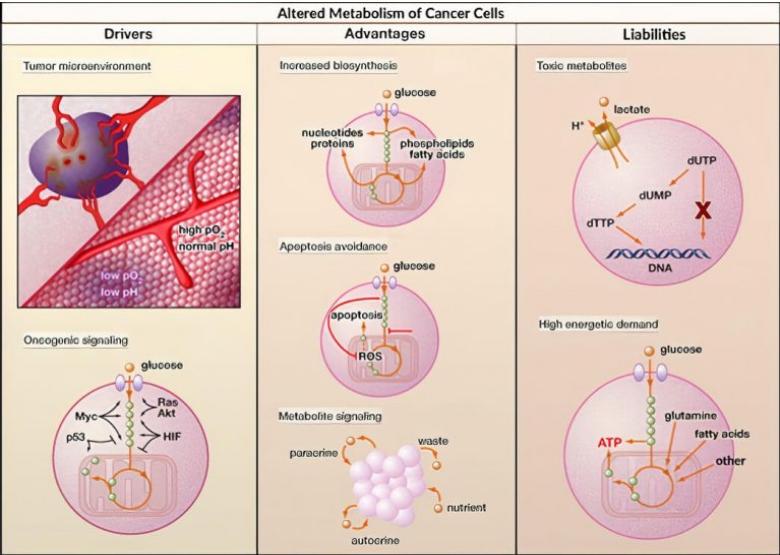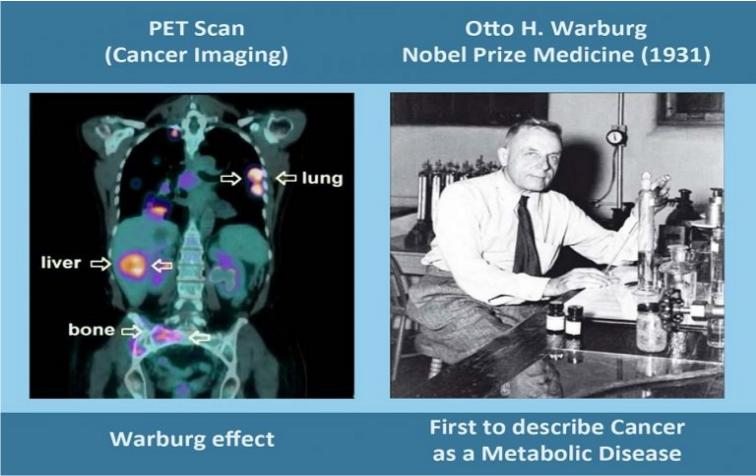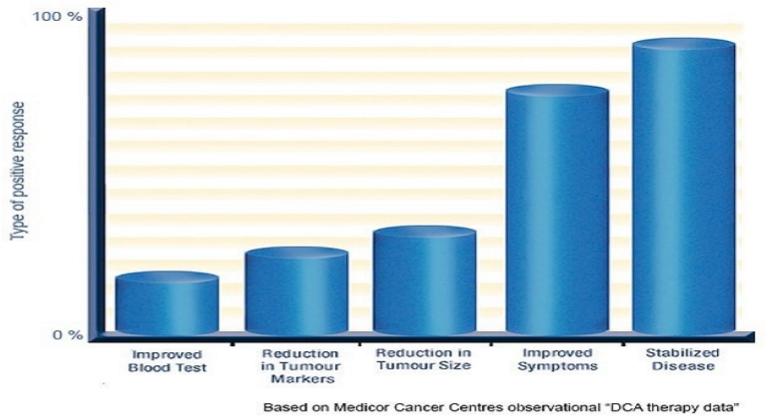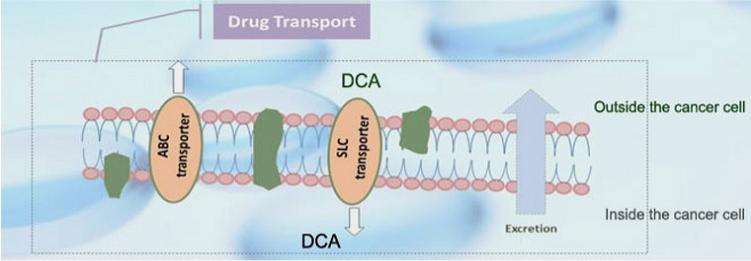Click on the image below to launch the video
DCA (dichloroacetate sodium) treatment for cancer
Dichloroacetate sodium (DCA) is an inexpensive and simple chemical compound similar to combining vinegar and salt. It was originally used in cases of a rare disease called "congenital lactic acidosis." This means it is not a "new" drug and has been used safely in humans for decades. Studies from this application of DCA indicate mild to moderate side effects.
DCA is available in several forms including topical cream, oral liquid, oral capsules, and via intravenous.
In 2007 at the University of Alberta, DCA, a simple molecule, was found to kill off cancer cells in breast, brain and lung cancers in rats, while not harming healthy cells. [1] It was observed that DCA would turn on natural apoptosis (cell death) in the cancerous cells of lab rats. It was also observed that DCA blocked the process by which glucose is used by cancer cells, thus removing their energy source and starving them. Notably, it did not block the use of glucose by healthy cells. Researchers worldwide have confirmed the University of Alberta's findings.
Studies with human subjects were first published in 2010, confirming DCA to be effective for treating glioblastoma (a type of brain cancer).
There is evidence that DCA is effective for many types of cancer cells. Based on both lab studies and human studies along with case reports, the types of cancer studied thus far include brain, breast, cervical, colon, lung, lymphoma, ovarian, prostate, uterine, and cancer of an unknown primary source. It has also been found to boost the effectiveness of radiation.
Click on the image below to launch the video
Mild to moderate side effects include gastrointestinal issues, mood changes, sedation, confusion, memory issues, hand tremors, and reversible neuropathy (when caught early). A small percentage of patients experience mild liver toxicity. It is usually recommended that patients who experience moderate levels of one or more side effects be taken off DCA as a precaution. The majority of side effects have been observed to resolve within days, save for neuropathy which can take several weeks to reverse.
There has been some evidence that DCA potentially interacts with hallucinogenic drugs including cannabinoids, benzodiazepines, and other central nervous system drugs, particularly when the patient is already experiencing a level of neurological side effects.
There has also been some evidence that high levels of caffeine can inhibit the effectiveness of DCA.
In the US, Canada and most of Europe, DCA is prescribed by a doctor. It is discouraged to obtain DCA from any other means, as some types of DCA are not suitable for human consumption.
No one owns the rights to DCA. The research done so far has been funded largely by a generous public. Further studies are in the works, and results look very promising.
How long has humanity been plagued by cancer? The answer might surprise you. It looks like our ancestors faced the same challenges as we do in the 21st century.
Some of the earliest proof of cancer is found among ancient mummies from Egypt. Archaeological evidence suggests that people of the past suffered from the same types of tumors as people do nowadays.
However, ancient Egyptians had no clear understanding what cancer is and hence no effective therapies existed. The cause and cure for the dreaded disease have always remained a mystery. (Ref.)
Fortunately, in the last century the progress in understanding oncological diseases has been tremendous. When anesthesia became available, surgeons rapidly developed operations that removed the entire tumor along with cancerous lymph nodes. (Ref.)
During World War II, compounds blocking critical chemical reactions for DNA replication emerged. Further development of such cytotoxic agents led to the advent of chemotherapy. Unfortunately, these drugs targeted normal cells as well as cancer cells, therefore, safer yet effective alternatives were still needed. (Ref.)
Before long, more sophisticated treatments such as immunotherapy and targeted therapy became available in oncology. The better understanding of cancer biology resulted in new age medicines. These medications could boost the immune system's response to target malignant cells and hinder their growth, division as well as metastasis. (Ref.1), (Ref.2)
Interestingly, the whole exploration process led to unexpected discoveries. Significant metabolic shifts were acknowledged to be a characteristic of many cancer types. Coupled with the emerging wave of drug repurposing these findings opened the door for metabolic cancer treatment and soon Sodium dichloroacetate became the most prominent example of this strategy. (Ref.)
In 1923, a German biochemist, medical doctor and Nobel Prize laureate, Otto Heinrich Warburg, made a ground-breaking discovery vital in understanding the energy metabolism of cancer cells. This identified phenomenon is now recognized as the hallmark of cancer and is called the Warburg effect.
Otto Warburg observed the cells of a rat tumor and noticed that their growth is powered by extreme amounts of glucose (sugar) without the increased use of oxygen. This made no sense since using oxygen for producing energy from nutrients is a significantly more efficient way. Over a hundred years ago such findings raised more questions than answers.
Now it's known that the enormous glucose hunger and reduced intake of oxygen grant cancer cells a unique set of evolutionary advantages. (Ref.)
One of the ways how cancer cells benefit from the Warburg effect is by shifting to rapid biomass production. The increased glucose uptake provides the cancerous tissue more building components for making new genetic material and protein, ultimately leading to increased cancer proliferation and growth. (Ref.)
In addition, it is well known that normal mammal cells are constantly supplied with oxygen, otherwise they would die quickly. However, malignant cells act in a totally different way. As the tumors grow rapidly, they often outgrow their oxygen supply. Needing no oxygen to fuel its growth and thrive, the cancer does not suffocate.
Soon the tumor switches its metabolism to aerobic glycolysis. It begins producing and excreting excessive amounts of lactic acid outside the cells, eventually leading to increased acidity of the tumor microenvironment. (Ref.)
Acidic tumor microenvironment promotes further invasion and metastasis by breaking down the extracellular matrix between our cells. Once the acidity level is elevated, it also helps cancer in avoiding our immune system, the natural defense mechanism against malignancies. This is one of the reasons why the effect of immunotherapy can often start diminishing when treating advanced cancer. (Ref.)
At the same time, since the tumor utilizes less oxygen, the mitochondria inside the cells start generating less reactive oxygen species that serve an important role in preventing as well as removing cancerous cells. The cancer begins avoiding a mechanism known as apoptosis. (Ref.1) (Ref.2)
Apoptosis is a normal process that occurs in our organism as a convenient way to eliminate cells that should no longer be a part of the body. It's a form of natural programmed cell death that prevents tumors from developing and expanding in the first place. As a consequence of avoiding apoptosis, the cancer cells become immortal. (Ref.1), (Ref.2)
These are the main metabolic advantages that enable the tumors to thrive. Notably, the evolution of tumor cells is a rather complex process, which makes it a difficult disease to treat. However, this is just one side of the coin. On the other hand, the Warburg effect can be exploited against the cancer itself.
In diagnostics, humanity used this cancer metabolism phenomenon for diagnostics. The positron emission tomography (PET) scan reveals the tissues and organs that have abnormal metabolic activity.
Since the cancer cells have the Warburg effect active, they absorb radioactive glucose a couple of hundred times faster than the surrounding normal tissue. As a result, the tumors light up in the images and can be conveniently traced in the whole body. (Ref.)
In treatment, the Warburg effect could be the "Achilles' heel" of cancer that was ignored for almost a century, since virtually all of the past cancer therapeutics focused on a gene-centered approach. The compound Sodium dichloroacetate acts in a completely different manner and instead corrects the abnormal metabolism of the cancer cell.
It disrupts the chemical reactions that tumors use for their rapid growth, starving cancerous cells of nutrients. Moreover, it restores the "bad" metabolism in cancer cells. DCA is an activator of damaged mitochondria.
As a consequence of stimulating the mitochondria, DCA increases the production of reactive oxygen species in the cell. These changes induce further cellular mechanisms that lead to apoptosis, which in other words is selective tumor cell death. This results in decreased proliferation of cancer cells, decreased tumor size, symptom alleviation and increased host survival. (Ref.)
DCA transforms the most aggressive cancer cells to less aggressive ones. Since the Warburg effect is only present in malignant cells, healthy cells remain unaffected by Sodium dichloroacetate.
What positive improvements to expect?
DCA is great for stabilizing the tumors, which means that they cease to grow and expand. This also leads to improved well-being and reduced tumor markers of the patient.
People can expect to regain their appetite, strength and weight. DCA also treats the chronic pain that is often present as a complication of cancer.
In addition, Sodium dichloroacetate is also an option for someone with brain tumors since it crosses the blood-brain barrier.
Dr. A. Khan explains the benefits of DCA in his excellent lecture.
Click on the image below to launch the video
How to use DCA for cancer?
DCA should be used as a single agent or in combination with other regimens until there is no evidence of disease (NED) in the cancer patient.
Even when the cancer is gone, it's advisable to continue using DCA for cancer at least 5 years in lower doses and have prophylactic screening once every 3-6 months. If the cancer is away even after 5 years, DCA can be used in low doses occasionally as a prophylaxis to ensure that the tumors don't come back.
We will finish this page as soon as possible. In the mean time, please use our DCA dosage and usage (Quick guide) or DCA dosage and usage (Long guide).
Cancer cells and DCA-resistance. How to overcome this problem?
The Sodium dichloroacetate molecule enters the cancer cell through the SMCT1 (SLC5A8) transporters.
Unfortunately, as the tumor tissue becomes more malignant and develops more mutations, the expression of the SMCT1 transporter goes down. Subsequently, DCA has a harder time entering the cells to produce its maximum anticancer effect. (Ref.)
If one has experienced a dramatic improvement at the beginning of DCA cancer therapy and after some time the effect has been diminished, it could mean that the tumor has developed some resistance to DCA. Nevertheless, there could be a practical solution to this issue. (Ref.1), (Ref.2)
Diclofenac 25 or 50 mg tablets orally 1-2 times per day can lead to the re-expression of DCA transporters. It also serves as an anti-inflammatory drug and a pain killer, which could help oncological patients manage physical pain.
The problem with Diclofenac is that it also suppresses the gastric mucosal barrier, which might lead to the stomach acid causing heart burn or small erosions. In more severe cases, it can cause peptic ulcers and bleeding if used for prolonged periods of time.
The solution to this problem is the additional use of proton-pump inhibitors such as Omeprazole (Prisolec), Pantoprozole (Protonix), Lasonprazole (Prevacid) or Esomeprozole (Nexium) 20 mg once daily, 30 minutes before breakfast. These medications reduce stomach acid secretion and thus prevent the most common Diclofenac-associated side effects. (Ref.)
Furthermore, there is evidence to suggest that Omeprazole enhances the effect of DCA. (Ref.)
The protocol to overcoming DCA-resistance in tumors:
Diclofenac 25 or 50 mg one tablet once or twice daily, at least 30 minutes before breakfast and/or dinner (total 25-100 mg per day). Five days a week, two days break. Resume.
Omeprazole (ideally), or Pantoprozole, or Lasonprazole, or Esomeprozole 40 mg once per day, at least 30 minutes before breakfast, daily, without breaks.
Examples: A) 160 lb person with no cancer-associated pain and diminished response to DCA therapy should take Diclofenac 25 mg twice daily with Omeprazole 40 mg in the morning. B) 220 lb person with moderate cancer-associated pain and diminished response to DCA therapy should take Diclofenac 50 mg twice daily with Omeprazole 40 mg in the morning.
*Diclofenac should not be used if one has severely impaired kidney function, liver disease, history of erosions or ulcers in the upper gastrointestinal tract, bleeding due to clotting disorders or asthma.
*Omeprazole or other proton-pump inhibitors should be avoided if the individual has osteoporosis, a broken bone or systemic lupus.
Ibuprofen, ketoprofen, fenoprofen, naproxen, indometacin, resveratrol and quercetin are not recommended with the DCA protocol, since they tend to worsen the transportation of the DCA molecule into the cancer cells through the deactivation of SMCT1 transporters. (Ref.1), (Ref.2)
There is evidence that Vitamin E supplementation could also impair the anticancer effect of DCA through an unknown mechanism. (Ref.)
Procaine is not recommended for the restoration of SMCT1 as it has poor bioavailability and thus can only theoretically work in experimental cell laboratory cultures (in vitro). (Ref.1), (Ref.2)
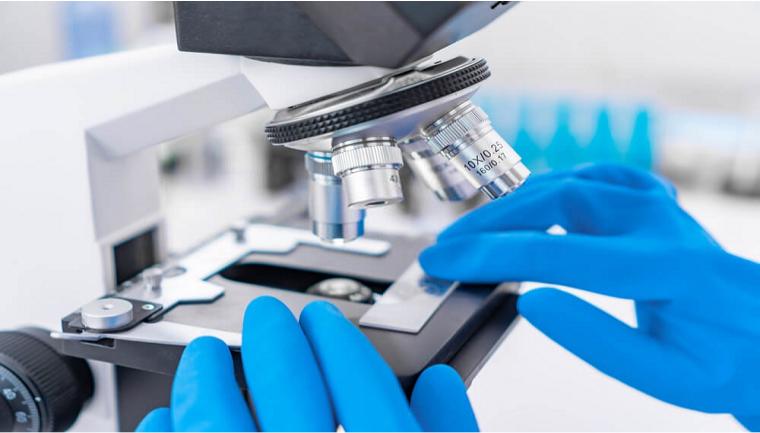
Disclaimer: Throughout this website, statements are made pertaining to the properties and/or functions of food and/or nutritional products. The information provided is for educational purposes only and is not intended as medical advice. Users assume all responsibility for the application of the content on themselves. These statements have not been evaluated by the Food and Drug Administration and these materials and products are not intended to diagnose, treat, cure or prevent any disease. The information and/or products on this website are reproduced are not meant to replace and/or to ignore the advice of a practicing physician.
This website, HELPING CANCER VICTIMS, is NOT a 501(c)(3) enterprise. Your support makes it possible for every visitor to recognize there may be an alternative to your well-being. Supporting this mission may save lives. I am trying to spread the truth about cancer, as I see it (non-doctor). Your generous donation will help me to continue this research and expose the truth, as I see it; cancer is not a death sentence, is reversible and or preventable with the right knowledge / information. There is no money available for the prevention of cancer, only for a cure after the fact. If everyone that visits donates one-dollar ($1.00) could save a life by supporting this website, with its alternative view point. What is one life worth? Conventional cancer treatment may cost an individual between $200,000.00 - $1,000,000.00. Most people can afford to pay for the alternatives found on this website that is why (in my opinion) most of these alternative treatments are considered quackery by the FDA and the AMA. Furthermore, none of the remedies discussed herein involve expensive patented pharmaceuticals that have never cured any disease, not one, ever. Come back and visit often, I am just getting started… John Korman (561) 393-0773, please leave a message and I will return your call within 24 hours.



